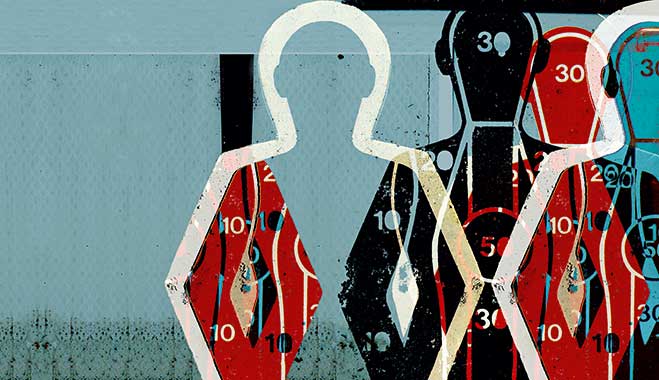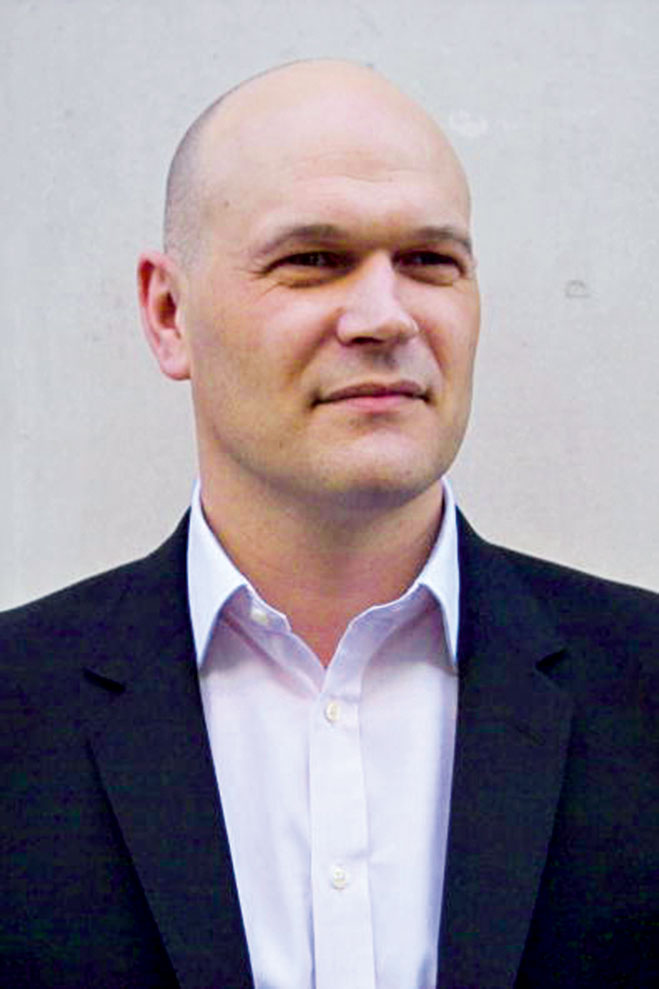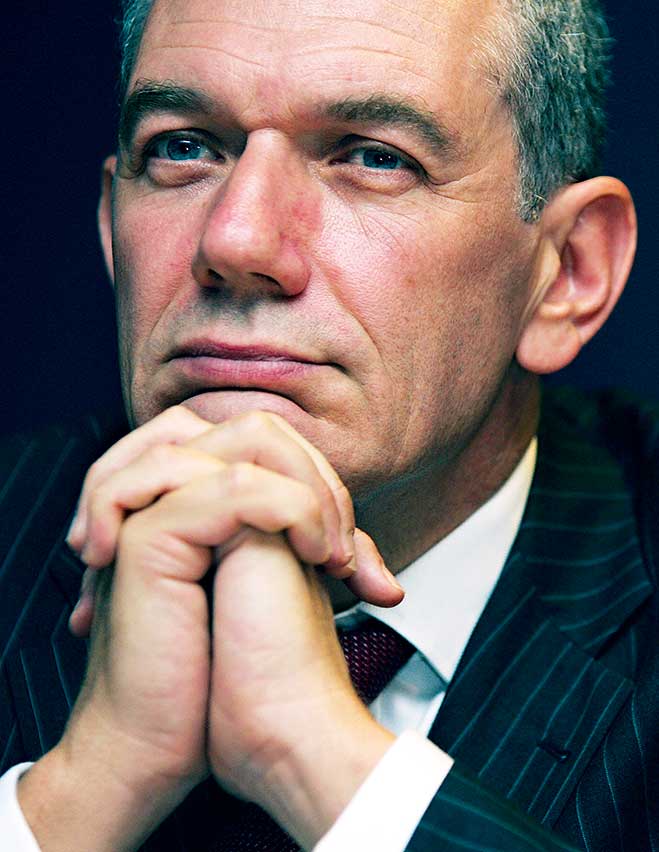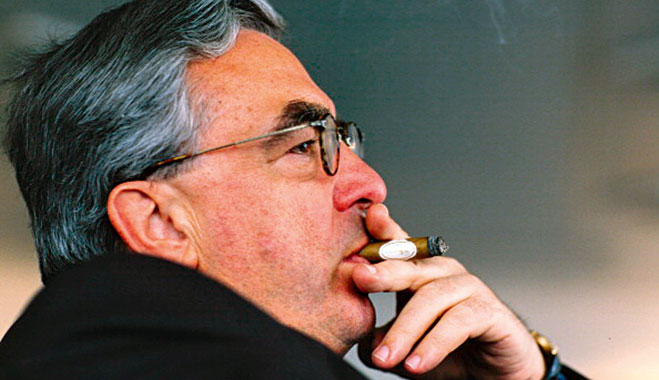
A recent report conducted by management consultancy firm Booz & Company shows companies worldwide have started to appoint new CEOs at a level not seen since before the recession. Of the world’s top 2,500 companies, 14.2 percent had employed new CEOs in 2011, significantly up on the 11.2 percent of 2010. Of the CEOs that left their jobs in 2011, the average term was 6.9 years, with outsiders tending to spend less time in the job than those promoted from within.
The reason for the increase in new CEOs is thought to represent companies’ desire to bring in new ideas during a recovering world economy and stay ahead of the game. This adds pressure on the new men to hit the ground running. Companies that face particularly tough times also wish to bring in a fresh face to drive restructuring plans; outsiders have the advantage of having no ties to the previous corporate culture that needs reform. What becomes apparent however, is boards sometimes hire someone to clean up the business, but then get cold feet about what the outsider says needs cleaning.
Michael Woodford
With a strong corporate culture firmly rooted in Japan, the decision in 2011 from Olympus’ board of directors to appoint a foreign businessman as the new chief executive was a bold move. British-based Michael Woodford was seen as the perfect man to shake up Olympus.
The first non-Japanese chief of the firm, Woodford was seen as an outsider ready to stir things up, but with the crucial insider knowledge of Olympus’ corporate culture. Born in Liverpool in 1960, Woodford trained at Millbank College of Commerce before going to work at KeyMed, a British-based medical equipment division of Olympus in 1980.
Having worked at subsidiaries of Olympus for 30 years, Woodford was promoted to managing director of Olympus Europe in 2008 by then-CEO Tsuyoshi Kikukawa. Praised for his cost-cutting skills, he quickly became seen as a star of the company. The European division grew so significantly that he was promoted to company president and CEO in February 2011, where he instigated a series of cost-cutting reforms.
Sourcing change
Eventually he was promoted to CEO that September. Announcing the appointment, the board said it felt Woodford had “exceeded expectations” over the previous few months, adding that he had “created an environment where change is not only accepted, but actively encouraged.” Evidently, the board were not quite ready for too much change. Admitting to being “loud-mouthed” and “strong-headed”, Woodford immediately set himself the task of overseeing the group’s financial records. What he discovered was evidence of vast payments to advisers and companies in the Cayman Islands, the offshore tax haven.
The payments included $687m of fees paid to two advisory companies, Axes and its Cayman Island-based subsidiary Axam, after the $2bn takeover in 2008 of British medical company Gyrus. Upon discovering the payments, Woodford hired PricewaterhouseCoopers to sift through payment details.
After repeatedly asking for an explanation from Kikukawa and the board about the nature of the payments, and then calling for the executives to resign, Woodford was fired on October 14, a mere two weeks after becoming CEO.
Kikukawa installed himself as CEO again, and immediately blamed Woodford for failing to understand the corporate culture of a Japanese business. He added: “Michael Woodford has largely diverted from the rest of the management team in regard to the management direction and method and it is now causing problems for decision-making by the management team.”
Woodford retained his seat on the board, but in an interview after being ousted, he described the board as “contaminated.” He also went on and laid the blame at Kikukawa’s feet: “The whole board have had discussions and vote unanimously and no one asks anything. It’s just complete and utter obedience to Tsuyoshi Kikukawa.”
Investigations were launched after Woodford reported the case to the Serious Fraud Office in the UK, and the FBI was also eager to look at the issue. Investigators in Japan were also trying to see whether more than $2bn in unaccounted funds had been transferred to companies with links to organised crime. When the news of the scandal broke it wiped 75 percent off the value of the company’s stock price, losing shareholders nearly $5bn.
Woodford resigned from the board on November 30 after unsuccessful attempts to offer an alternative plan for the company, having approached institutional investors with a proposal to seize control by way of a proxy battle. Threatened and humiliated, he went on to sue for wrongful dismissal.
In an attempt at reform, Kikukawa resigned, making way for executive Shuichi Takayama. Woodford poured scorn on the plans: “The promise for reform or reconstruction by the president and the current board carries little or no credibility and is continuing to harm Olympus and its long-term future.” In May 2012 Woodford settled his unfair dismissal case for £10m.
When his departure was announced, the Olympus board said that when hiring Woodford they “hoped that he could do things that would be difficult for a Japanese executive to do.” In reality, it was his willingness to go against the corporate culture at Olympus that proved his undoing.
John Pluthero

The example of Cable & Wireless (C&W) is one that shows it is not always advisable to return to a job where you enjoyed your greatest success. In August 2005, C&W agreed to purchase UK telecommunications firm Energis for £674m. With the acquisition came a number of key staff, including CEO John Pluthero, who became leader of C&W operations in the UK.
Pluthero had a reputation of being adept at turning around ailing telecom companies. Upon joining a bust Energis in 2002, Pluthero was faced with what many commentators thought an impossible task. However, he reversed the chronic problems and returned the company to profit in 2004.
When appointed CEO of C&W he again turned around the group, selling off unprofitable divisions and launching successful new partnerships. In March 2010, he announced plans to split the company into two entities, Cable & Wireless Worldwide (CWW) focusing on telecoms services in the UK, with the international Cable & Wireless Communications being spun-off. Pluthero became chairman of CWW, receiving a bonus through a long-term incentive plan of £10.2m for his efforts.
Ignoring warnings
By June 2011, however, the company was in turmoil. Pluthero, as chairman, had hired Jim Marsh as CEO a year earlier, and Marsh’s tenure saw three profit warnings. Deciding there was only one man capable of saving the company, Pluthero duly returned as CEO, rewarding himself with a pay rise of £75,000 on top of his £600,000 a year contract. Marsh received £650,000 for his trouble.
Pluthero outlined his intentions: “Clearly it has been a very difficult 12 months. It has been easy to lose sight of what this business could be; it is my intention to reassert and realise that future.” Nick Delfas, an analyst at Morgan Stanley said in a note: “The appointment of the CWW CEO as executive chairman, then chairman [with no reduction in salary, in fact a total remuneration above that of Vodafone’s chairman], and now CEO again raises governance concerns. The CEO appointment was made without a search for alternatives, which again raises governance concerns and we think may be questioned by shareholders.”
Pluthero’s second term proved short-lived. A half-year loss of £433m was announced and despite having only been in the role a few months, Pluthero was seen as responsible due to his influence while the chairman.
Upon stepping down in November 2011, Pluthero claimed he could not offer his long-term commitment to the company. “We identified various elements of what we thought needed to be done and we all agreed that, given some of the elements play out over three to five years, the business needed a chief executive who would stay for three to five years.”
Christian Streiff

When the previous management of a troubled company is forced to resign it is often viewed as an opportunity to bring in an outsider to undertake the restructuring that an insider might not be willing to do. This is what Airbus attempted to do in 2006 by appointing two CEOs, Christian Streiff and Louis Gallois.
In 2006 Airbus was owned by European Aeronautic Defense & Space (EADS), a group consisting primarily of DaimlerChrysler, Lagardère, BAE Systems, and SEPI. The company structure consisted of two chairmen and two CEOs. This confusing state of affairs revealed the distrust between each side, with both insisting on a representative in each role.
Problems arose in early 2006 when BAE Systems decided to sell its 20 percent share in the business. With the stake initially valued at $4.7bn, BAE negotiated a price with EADS through informal discussions. Protracted and without any concrete agreement, the discussions ended when BAE appointed Rothschild to decide on an independent valuation.
When Airbus announced that its much-anticipated new A380 passenger airliner would be delayed the share price plummeted. Despite recovering, BAE accused EADS of timing the announcement to weaken the value of its shares, which by the beginning of July were valued at just $3.6bn. This controversy heightened after it emerged that EADS co-CEO Noel Forgeard had sold a number of his shares prior to the announcement.
When a class action lawsuit was filed against EADS by a French shareholder group over the crisis, Forgeard and Airbus CEO Gustav Humbert resigned. Attempting to bring in fresh blood to reverse the fortunes of the group, EADS brought Streiff in to head up Airbus. Gallois, the former president of France’s state-run rail company SNCF, would join as co-CEO of EADS.
Streiff was faced with the challenge of regaining shareholder and customer trust. “We are learning to be humble and change our bad habits. Airbus is in the middle of a serious crisis with our customers.”
He began an audit to see how to best deliver the $14bn A380 project. The problems facing the project stemmed largely from the internal squabbling that the company structure created. One analyst summed up the situation at the time to CNN: “This is a plane that’s made by four countries that hate one another. It only succeeds because the greater enemy is America.”
After a further delay of two years, Streiff insisted on being given more money to push through his reforms and greater authority over the decision-making process. The board, however, were not comfortable with relinquishing any more control to him. Eventually, Streiff announced in early October initial plans for cost-savings, including 30 percent reduction in overhead costs and €2bn annual savings beginning in 2010. Streiff indicated he wanted to see all work on the A380 move to France, with development of the smaller aircraft to remain in Germany. The plans did not go down well with the German side of the business, where 12,000 people were employed by Airbus.
With growing resentment within EADS and distrust from the German side, Streiff found himself isolated. By the first weekend of October, rumours were swirling that he’d offered to resign. Repeated briefing from anonymous sources added to the uncertainty, with questions that the job was ‘too big for him’, and others citing his lack of diplomatic skills.
Outside observers seemed bemused by the rumours, with London-based analyst Nick Cunningham describing any potential removal as a “disaster,” adding: “If he leaves because he’s not being allowed to do what is required, then there really isn’t much hope.”
On October 9th the same year EADS announced that Streiff had resigned and Gallois would succeed him. EADS went on to blame Streiff for daring to go against the wishes of the parent company, a spokesman saying: “We said Airbus would be integrated more closely into the EADS group. He would have been aware of that when he took the job. Obviously, he didn’t pay too much attention to this political orientation.”
Commenting after his resignation to Le Figaro, Streiff said “the corporate governance at Airbus didn’t allow for the success of my plan.” Ironically, Gallois announced in February 2007 restructuring plans that bore a strong resemblance to much of Streiff’s rejected proposals.
Streiff later became CEO of the car manufacturers Peugeot Citroen, where he had another short-lived reign, lasting just two years before being dismissed for reportedly alienating staff with plans for cost-cutting and payroll reduction. Again, a lack of diplomatic skills were blamed for his removal.
Moritz Suter

The story of Swissair’s rapid downfall dates back to the 1990s after it began an aggressive expansion plan. Named the ‘Hunter Strategy’, its goal was to grow Swissair’s market share by smaller airlines. Under the stewardship of COO Philippe Bruggisser, Swissair bought stakes in a number of smaller European airlines, accumulating massive debts which would later prove to be its undoing.
A former pilot of Swissair in the 1960s, Moritz Suter founded Crossair in 1978. Eventually becoming part of the SAirGroup that owned Swissair, Suter was parachuted in as CEO in January 2001 to replace Bruggisser after the board finally stopped his expansion plans. Suter was seen as the ‘lifesaver’ of Swissair, after successfully building Crossair up into a modern airline with a fleet of 80 planes. His first moves were to halt planned increased investments in TAP Portugal and Turkish Airlines. All other future airline investments were also scrapped.
In March it became clear to Suter that the airline’s problems were spiraling out of control. He blamed the structure of the group and bailed out. He lasted just 44 days. Swissair’s problems mounted, with a criminal investigation launched by authorities in April 2001 to see whether the company acted illegally in amassing losses of $1.7bn the previous year.
Mario Corti
Mario Corti succeeded Suter in March 2001, arriving from food company Nestlé. Nicknamed ‘Super Mario’, Corti saw managing the stricken airline as a challenge worth taking. He told the BBC at the time: “Nobody else wanted to do it. A lot of people in Switzerland are fairly timid, and they didn’t want to take the risk. But I wanted to be able to look at myself in the mirror and say I had a go.”
By October 2011 the company faced massive debt problems. Things were made worse by the industry-wide crisis caused by 9/11. Corti desperately tried to stave off bankruptcy, announcing a major restructuring plan, which included the merger of Swissair and Crossair, and thousands of redundancies.
However, after UBS’ refusal to extend the airline’s credit, Swissair announced that it had run out of cash and was forced to ground all its flights. Corti then secured two large loans from the Swiss government, enabling the airline to resume operations briefly, but the 70 year old company was at an end.
In 2007, 19 senior executives, including Bruggisser and Corti, were charged with mismanagement, making false statements and forging documents. All the executives were later acquitted. It emerged that Corti had been paid $7.5m for his work at the airline.
Stefan Angwald
In January 2004 Rexam, the world’s largest drinks can maker, hired Swedish businessman Stefan Angwald as its new CEO. The firm chose Angwald to replace Rolf Börjesson, who would become chairman. Angwald took up full responsibilities in May after an interim period as the CEO designate.
Angwald’s previous experience had been nearly 30 years as an employee of Swedish consumer goods company Svenska Cellulosa Aktiebolaget (SCA). He left his job as Head of Hygiene Operations at SCA in September 2003 after a disagreement over future strategy. Surprisingly, this conflict did not put off Rexam, who were eager to utilise his “extensive experience and strategic insight in manufacturing and marketing as well as broad experience of managing a multinational business of a similar size, structure and focus to Rexam.” They also praised his “proven leadership qualities,” something that he would need if the company was to maintain its number-one position as the world’s largest drinks can maker.
Angwald was enthusiastic upon joining Rexam, and did not feel there would be a clash between himself and predecessor Börjesson: “Rolf’s stewardship as Chief Executive will cease when I take over but it is reassuring to know that I have Rolf to turn to when needed. I know that he is aware of his role as chairman and is stimulated by the challenges that his new role will bring. I look forward to working with him and the rest of the board.”
Angwald went about his job, and his success was instantaneous, announcing after two months pre-tax profits of £80m for the first half of the year.
Crushed control
However, after just four and a half months and little warning, the board decided they had had enough of their new man. “The board has regretfully concluded that Mr Angwald is not the appropriate individual to lead the company and has therefore asked him to step down.”
Given a two-year contract, Angwald was paid £1.14m before losing his job. He also received a bonus of £237,000. Due to the length of the contract, as well as expenses, his pay-off was rumoured to be as much as £3.61m, which drew considerable criticism from shareholders. The board defended their generosity, saying that by “acting swiftly” they had “acted in the best interests of shareholders.”
Threadneedle Investment, a significant stakeholder in Rexam, was particularly unhappy with the type of contract that the company had handed to Angwald. “We are uncomfortable with two-year contracts and we will be asking the company to make sure this doesn’t happen again.” The reasons for his departure were unclear. There was no evidence of mismanagement and the financial situation was relatively healthy. A spokesman said Angwald’s “personal style did not fit with Rexam’s culture”. It could be possible that the spectre of the previous CEO hanging over Angwald had caused tension about who was really in control of the business.
The role of the CEO has changed dramatically over the last 10 years, and companies are constantly evolving, finding the best solution to weather the financial storm. It seems over the past few years, more business insiders are questioning if the direction taken by a misguided CEO is the right one for thier economic growth, and not for personal gain.

